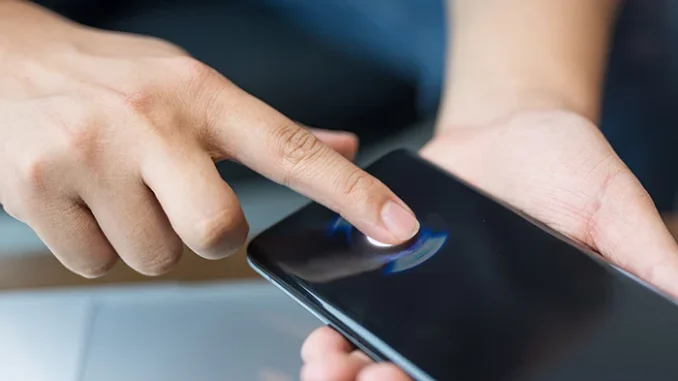
Table of Contents
What exactly is biometrics?
Biometrics is the most appropriate method for reliably and quickly identifying and verifying individuals based on unique biological traits.
Authentication and identification using biometrics
Biometrics enables a person to be recognized and authenticated using recognizable and verifiable data that is unique and distinctive.
Biometric identification
Biometric authentication compares data for a person’s features to a biometric “template” for that person to evaluate likenesses.
- First, the reference model is saved.
- The saved data is then validated by comparing it to the person’s biometric data.
Identification with biometrics
Biometric identification is the process of determining a person’s identity.
The goal is to obtain biometric data from this individual. It may be a photograph of their face, a recording of their voice, or a fingerprint image.
This information is then compared to the biometric information of several other people stored in a database.
Trends in biometrics
Faced with document fraud and identity theft, terrorism and cybercrime, worldwide regulatory changes, and new biometric security solutions, new biometric security solutions are being introduced.
Biometrics is the most feasible method of reliably and quickly identifying and verifying individuals based on unique biological traits.
Of course, growing public acceptance, enormous accuracy increases, a rich offer, and lowering prices of sensors, IP cameras, and software make it easier to implement biometric systems.
Many applications now make advantage of this technology.
Identifiers biometrics
Biometrics are classified into two types:
Physiological evaluations
They might be morphological or biological.
Fingerprints, hand shapes, fingers, vein pattern, eyes (iris and retina), and facial shapes are the most common morphological identifiers.
Medical teams and police forensics may employ DNA, blood, saliva, or urine for biological tests.
Behavioral evaluations
The most typical are:
Voice recognition, signature dynamics (pen speed, accelerations, pressure exerted, inclination), keystroke dynamics, how we use objects, gait, step sound, gestures, and so on.
The many techniques used are the topic of ongoing research and development and are constantly being improved.
The many types of measurements, however, do not all have the same level of reliability.
Physiological measurements typically provide the advantage of remaining more steady throughout a person’s life.
For example, unlike identification by behavioral measurement, they are not stressed.
When did biometrics first appear?
Biometrics solves a long-standing worry about proving one’s identity irrefutably by utilizing what distinguishes oneself.
Individual traits such as the trace of their fingers were adequate to identify humans as far back as prehistoric times, and they “signed” with their fingers.
But let’s be real. There’s more to it.
The truth is that biometrics, as well as the link between man and technology, is an enthralling subject.
The Evolution of BiometricsThe Chinese emperor Ts’In She was already using fingerprints to authenticate certain seals in the second century B.C.
William James Herschel, a British administrator in India, utilized fingerprints for the first time in a commercial environment in 1858.
He made his subcontractors sign contracts with their fingers after being assigned the task of building roads in Bengal.
That was an early kind of biometric authentication and a sure way of swiftly locating them if they failed.
Bertillon, a French police officer, pioneered scientific policing at the end of the nineteenth century.
He typically succeeded in identifying reoffending criminals by using physical measures of unique anatomical traits.
The Paris police (préfecture de police) began this method in 1888 with its Forensic Identification Unit (mug shot and anthropometry). In 1894, four prints were introduced, and ten more were added in 1904.
The Metropolitan Police in the United Kingdom began utilizing biometrics for identification in 1901.
It was started in the United States by the New York police in 1902 and by the FBI in 1924.
The measuring of distinct patterns (also known as behavioral biometrics) is not new.
It all started in the 1860s.
Morse code telegraph operators recognized one another by the manner they sent dash and dot signals.
Allied forces used the same method to identify senders and authenticate messages received during WWII.
This is the fundamental idea of biometric systems: identifying a person based on specific traits.
Biometrics is rapidly expanding, particularly in the sphere of identification documents.
Other security technologies, such as smart ID cards and chips (for electronic passports), are typically combined.
Where does biometrics come into play?
Historically, authorities have begun biometric applications for military access control, and criminal or civil identification under a strictly regulated legal and technical framework.
Today, industries such as banking, retail, and mobile commerce show a strong interest in the benefits of biometrics.
Most crucially, over the last seven years, millions of smartphone users have begun to unlock their phones with a fingerprint or a face.
But what makes biometrics so unique?
Biometric technologies are excellent anywhere identity and authentication are required.
Public safety and law enforcement
Law enforcement biometrics refers to biometric system applications that assist law enforcement authorities.
Automated Fingerprint (and Palm Print) Identification Systems (AFIS) are examples of criminal identification solutions. They save, search for, and retrieve fingerprint images and topic information.
Today, Automated Biometric Identification Systems (ABIS) can generate and store biometric data that matches biometric templates for the face (through mugshot systems), finger, and iris.

Leave a Reply